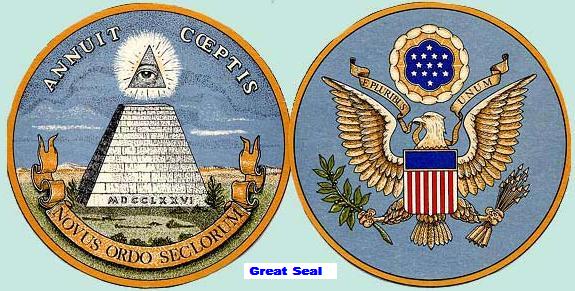

Communicators AND Others Enjoying Retirement
July 2008 Summer Issue Volume 8 - Number 2
Welcome to the latest issue of a Newsletter dedicated to the CANDOERs (Communicators AND Others Enjoying Retirement). This newsletter will be distributed quarterly. New issues will be posted on the Web for viewing on or about, January 15, April 15, July 15, and October 15.
The CANDOER Web site and newsletter may be viewed by going to the following URL: www.candoer.org
The success of this newsletter depends on you. I need contributors. Do you have an interesting article, a nostalgia item, a real life story, or a picture you would like to share with others? Do you have a snail-mail or an e-mail address of one of our former colleagues? If you do, send it to me at the following e-mail address:
candoercat@gmail.com
or to my snail-mail address:
Robert J. Catlin, Sr.
2670 Dakota Street
Bryans Road, MD 20616-3062
Tel: (301) 283-6549
Please, NO handwritten submissions.
This newsletter is available free on the Web to any and all who worked with or for members of DC, OC, IRM, IM, or LM.
This publication is available on the Web only.
None of the material in this newsletter has a copyright, unless otherwise noted. If you wish to print the newsletter and make copies to distribute to others, please feel free to do so.
The CANDOER News will be available in three formats: the first format will be as a web page; the second format will be as a PDF file; the third as a Microsoft Word document.
The PDF file (Adobe Acrobat) and Microsoft Word document will allow you to print the newsletter.
If you are unable to read the PDF formatted newsletter, you can go to www.adobe.com/products/acrobat/readstep2.html and download the FREE reader. When installed on your computer, it will allow the automatic opening of the PDF file.
British Code Breaking
By James F. Prosser
Recently I visited my son, Stephen Prosser, and his family, who are in the Foreign Service and based at the Diplomatic and Telecommunications Service (DTS) satellite ground station at RAF Croughton, England.
About 20 miles east of RAF Croughton is the British National Codes Centre at Bletchley Park. There they built a museum to restore the location where in World War-II 8,500 (including 300 American) code breakers, cryptanalysts, translators, radio operators, technicians, couriers and support staff worked tirelessly to intercept and break German messages encrypted on their Enigma cipher machine.
Bletchley Park was Britain's best kept secret in WW-II. At that time it was only referred to as "Station X", never its geographic location. Today it is open to the public as a heritage site and museum. A few of the guides there, quite elderly now, actually worked at "Station X" in the 1940s. In its heyday, "Station X" had dozens of temporary barracks constructed in adjacent farmer's fields to accommodate all the workers. They have all been removed and the fields restored to the farmers.
Son Stephen arranged to take Mary and I (both old time code clerks) to Bletchley Park for a thoroughly memorable visit back into our early lives as communicators. We explored and photographed their wide range of exhibits and equipment, some of which I actually used myself a very long time ago in the US Air Force and early days at the State Department. See the pictures and text included with this story.
Certainly the major feature of the museum is the room where COLOSSUS, the world's first electronic digital computer is installed. See picture and text.
Wartime British Prime Minister Winston Churchill had the utmost respect and confidence for Bletchley Park and the people working there. It was his secret passion; he called its code breakers his "geese that laid the golden eggs that never cackled." In recognition of the workers extreme importance in the war effort, he insisted "they have the absolute best in amenities and supplies, notwithstanding the inevitable shortages" encountered at the time. This was because the results achieved from the interception of German coded messages and the ULTRA information provided by the code breakers was so vital it saved countless lives and considerably shortened WW-II.
ULTRA was the name used by the British for intelligence resulting from decryption of German communications. The term eventually became the standard designation in both Britain and the United States for all intelligence from high-level cryptanalytic sources. The name arose because the code-breaking success was considered more important than the highest security classification available at the time (Most Secret or Top Secret) and so was regarded as being ULTRA secret.
Special mention has to be made about the couriers posted at "Station X." There were a couple dozen of them and they lived extremely hazardous lives. Some traveled by jeeps, but most of them went by motorcycle as it could maneuver better in difficult traffic and weather conditions. Routine intercepts and decrypted messages were dispatched to London via courier on train. But as often happened several times a day, Enigma coded messages broken revealed critical ULTRA information that had to be immediately acted upon by the military and government in London, 85 miles away. These messages were given to a motorcycle courier who, regardless of weather, daylight/darkness and visibility conditions literally had to "fly" over the country roads to make his delivery. Keep in mind that wartime travel at night, one had to drive with special dimmed lights, or no lights at all. As a result, numerous couriers were injured or victims in fatal accidents.
Should you wish to visit Bletchley Park, for anyone involved in the various phases of radio interceptions, cryptography and military intelligence, it will be a most fascinating experience. However, my daughter-in-law said, "After the first five minutes of the tour, I was totally bored. I didn't understand a single thing the tour guide was saying even though it was in perfect English! Communications is not my thing. I'm just an avid user."
Start by visiting their website at www.bletchleypark.org.uk and then go there!

1. Former code clerk Mary Prosser and son Stephen Prosser, DTS satellite engineer, at Bletchley Park National Codes Centre.

2. Old time code clerks Mary and James Prosser at the Bletchley Park National Codes Centre.

3. This is the Polish Monument at Bletchley Park honoring the three Polish mathematicians who actually broke the German Enigma code before World War-II. They were able to escape to England and present their findings to British intelligence. The intelligence gained through this source - codenamed ULTRA - was an incalculable aid to the Allied war effort. Each year on the Polish national holiday, a commemorative ceremony is held at this spot by British and Polish dignitaries. It is amazing still to this day that the Germans believed throughout the war that their messages enciphered with the Enigma code machine were impossible to be broken by the enemy.
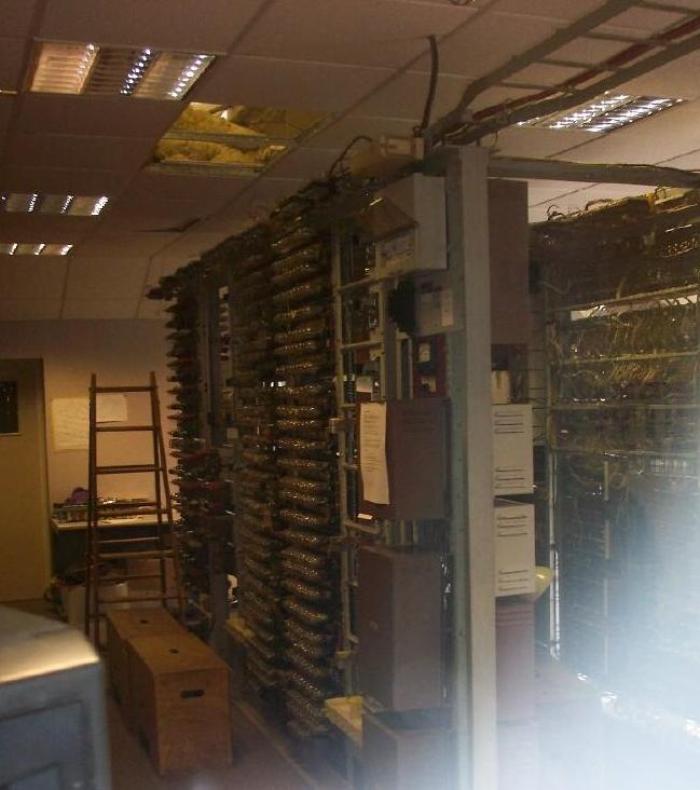
4. Rear view of the Colossus computer (poor lighting). The rear of the racks contained massive wiring harnesses and jacks to be used in changing permutations of the computer settings. In the past few years, this exact replica of the original Colossus was built by volunteers and installed in the same location of its predecessor. It must be remembered that the British never possessed a German Enigma cipher machine or its rotors, which probably is good anyway for too much time would have been wasted in manually working through billions of permutations of codes which certainly were changed frequently. The three Polish mathematicians assisted in the design and building of Colossus which drastically reduced the time required to break the German Enigma codes using purely electronic means.
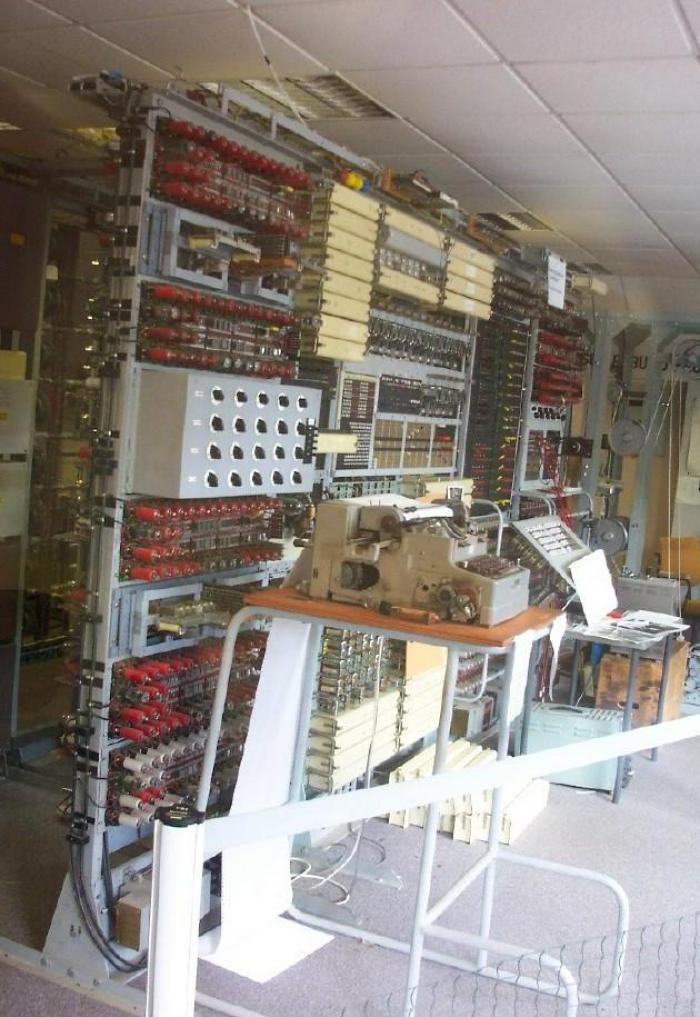
5. Front view of the Colossus computer. These were the days when vacuum tubes came into major use. No integrated circuits or silicon chips here! Colossus used over 2,500 vacuum tubes. The building housing it intentionally was designed without heating. The tour guide said "it was a bit warm during the winter even with the windows open, but beastly hot in summer." Electric power for Colossus was a critical issue. Bletchley Park had its own power generating station, but Colossus also had two of its own full back-up systems. Prime Minister Churchill said the extreme value of the ULTRA information developed here warranted it.
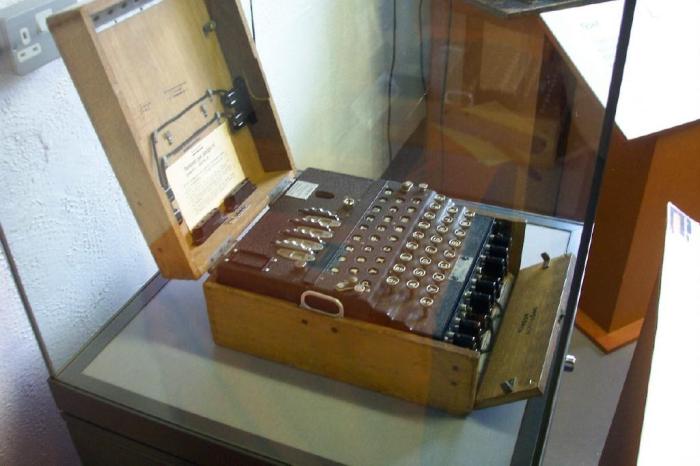
6. A German Enigma cipher machine with four rotors.
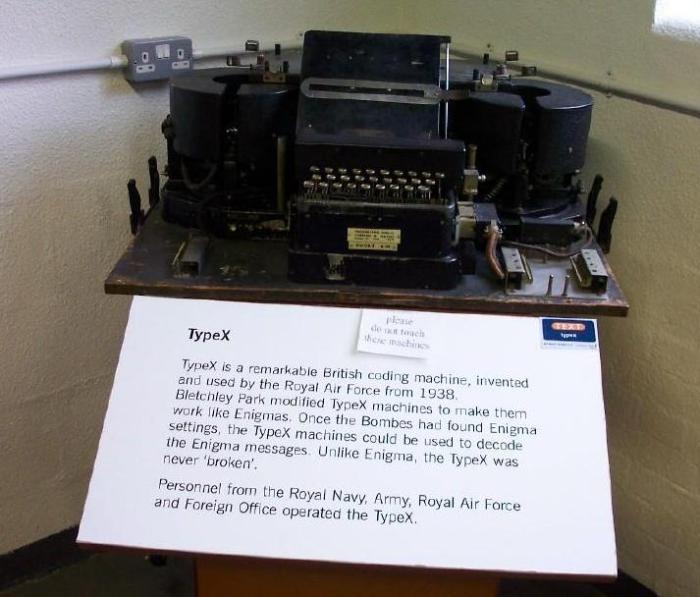
7. A British "Type X" cipher machine, similar in operation to the Enigma.
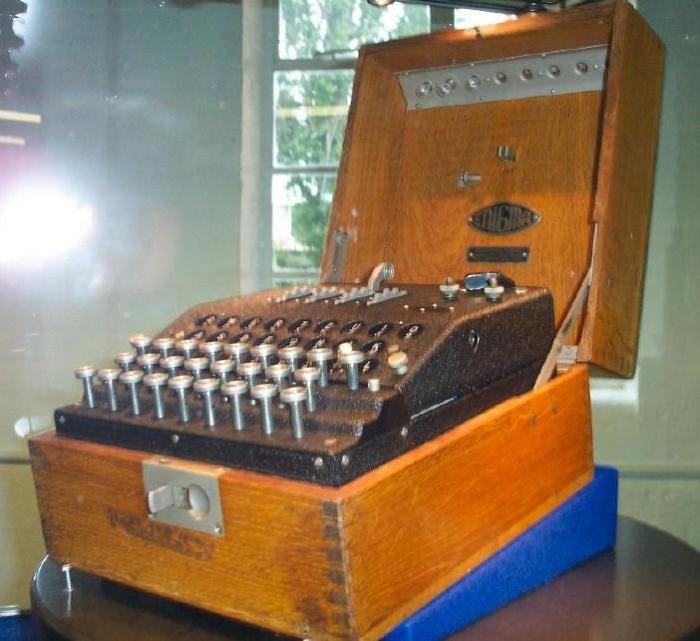
8. Another German Enigma cipher machine.
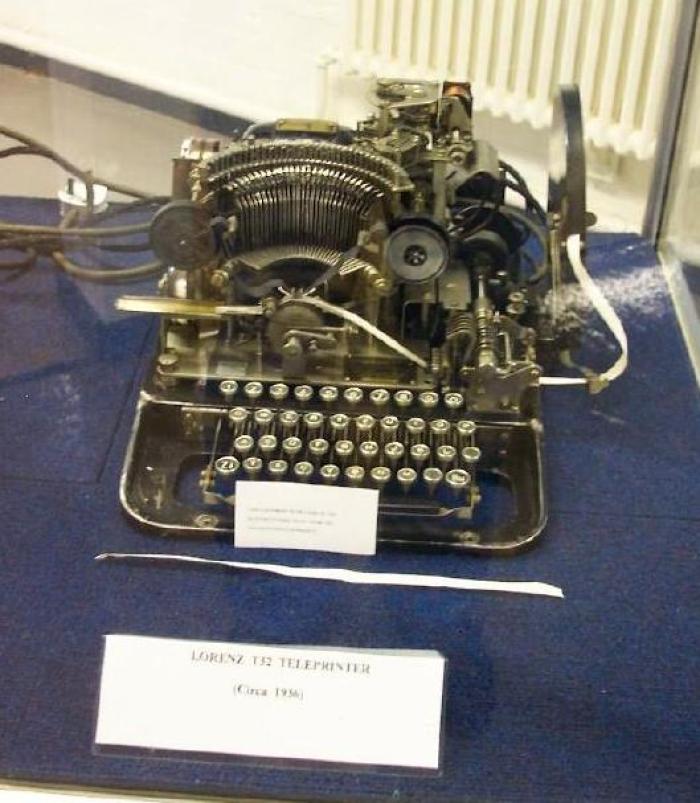
9. A German Lorenz teletype machine.
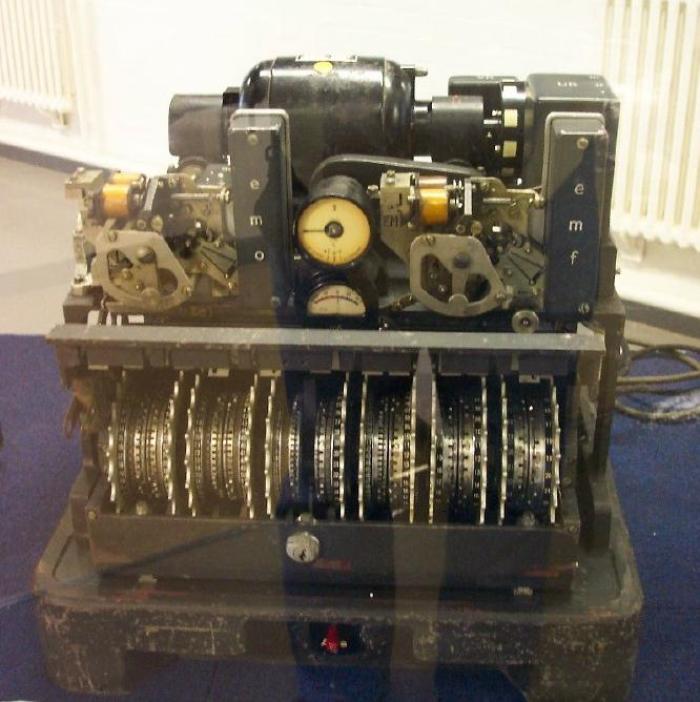
10. A 12-rotor cipher machine, origin unknown.
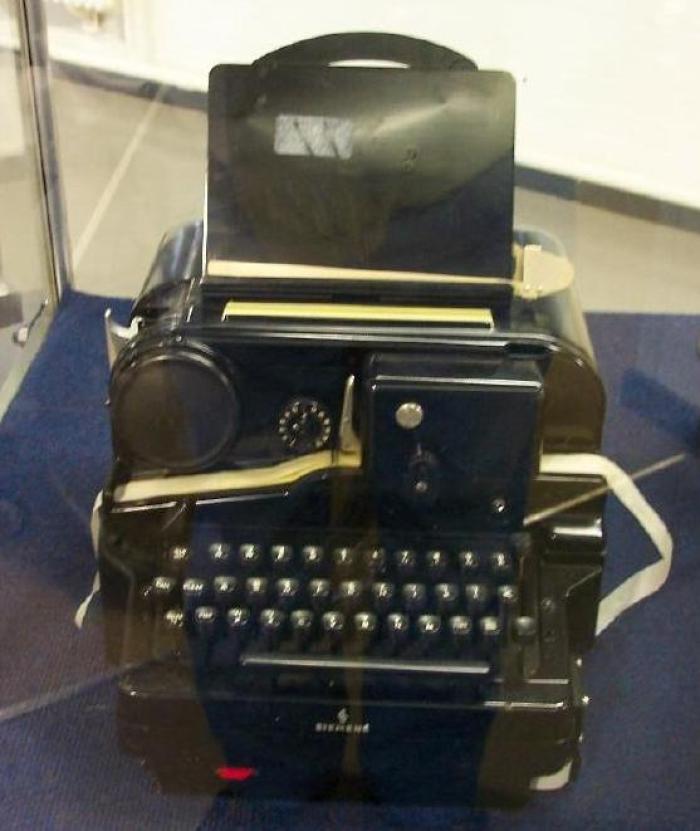
11. A German Siemens teletype machine.

12. A U.S. Army M-209 cipher machine. It used pin and lug settings to provide a simple, but variable encryption technique. It was originally developed by the Germans for field use only, for messages encrypted in it were easily susceptible to successful cryptanalysis in a very brief period of time. I was baffled that the Department of State even had some of them in its cryptographic inventory as late as 1954!
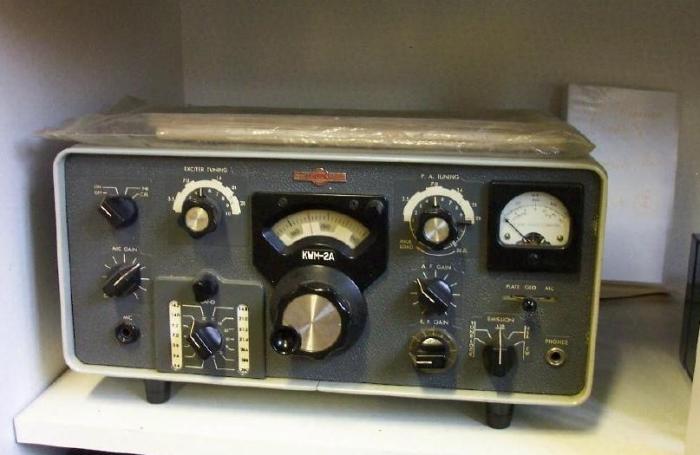
13. This is a Collins transceiver radio, KWM-2A. I believe it came into existence some time after WW-II. As it stands, it had a radiated power of about 130 watts. With the 30-L1 linear amplifier, 500 watts of power was achieved. With the 30-S1 linear amplifier, 1,000 watts of power enabled us in the Belgian Congo to reach just about anywhere on earth with the right atmospheric conditions. Hundreds of thousands must have been made. It was a bulwark of the Department of State's emergency & evacuation network worldwide, as well as in military, commercial, and amateur radio operations. Although it has been almost 40 years since I had my hands on a KWM-2A, I think I still could tune and operate one blindfolded.
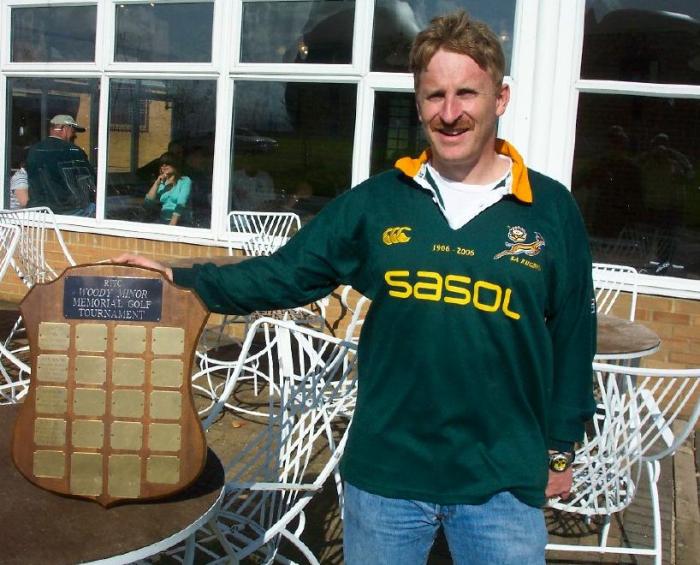
14. My son Stephen Prosser, holding a golf trophy honoring a mutual communicator friend at the DTS satellite station at RAF Croughton. The occasion here was a delicious pig roast done by one of Stephen's satellite engineers at the station. 153 people almost finished off the 120-pound pig.
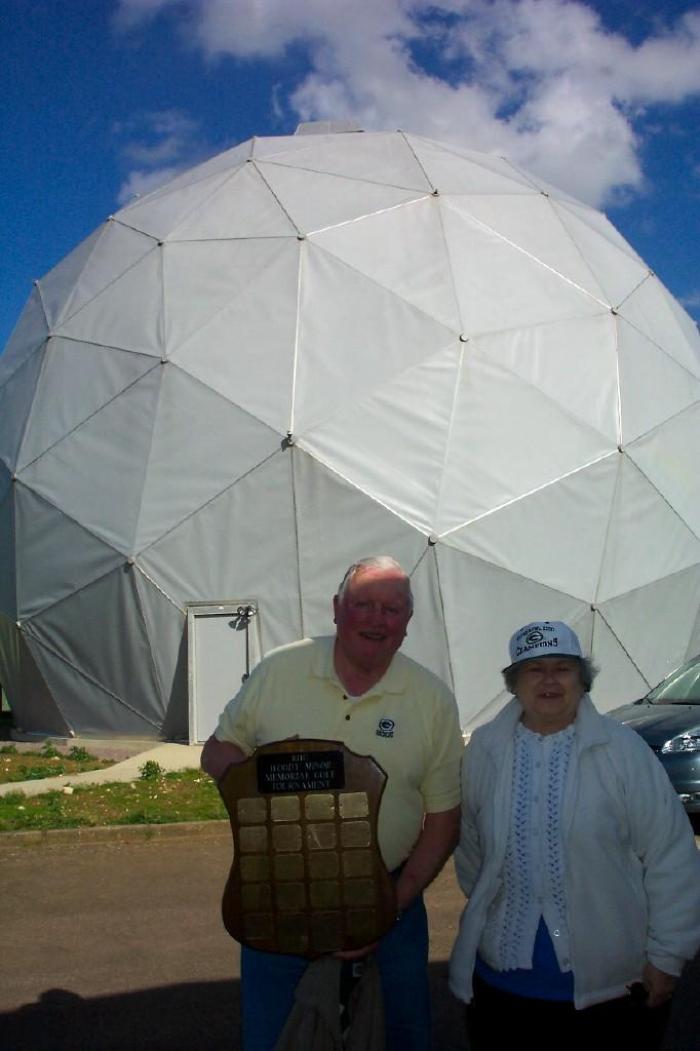
15. James and Mary Prosser near one of the DTS satellite terminals at RAF Croughton.
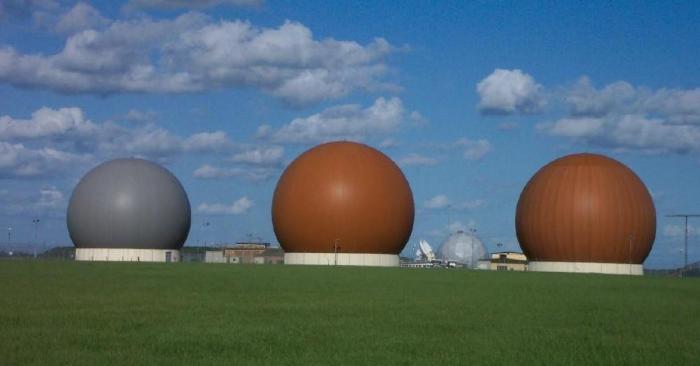
16. Three DTS satellite terminals at RAF Croughton. Locals refer to them as "golf balls", for that is what they appear to be when seen from a distance or from above.
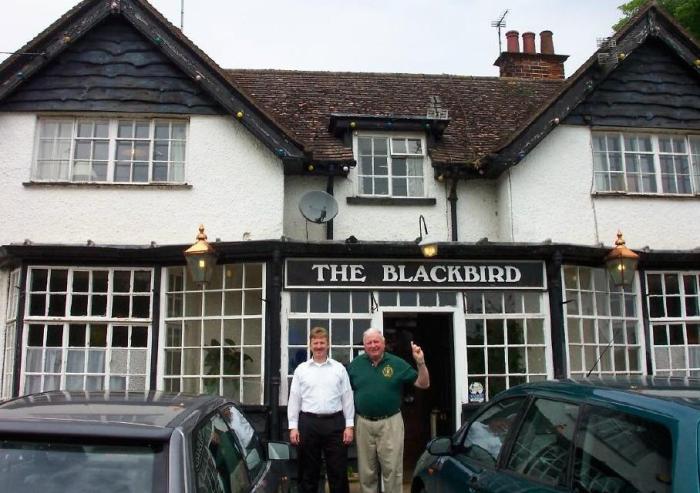
17. Lastly, no visit would be complete without father and son going to the famous Blackbird Pub for lunch in the heart of downtown Croughton! Note, I am wearing my DTS Croughton golf shirt.
See you next quarter!